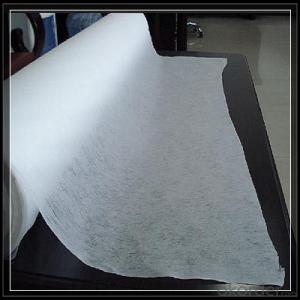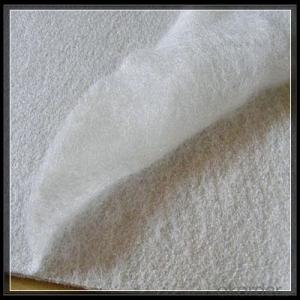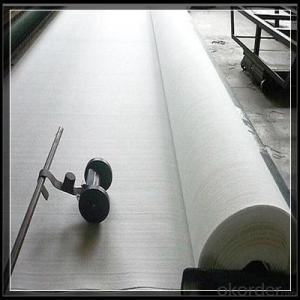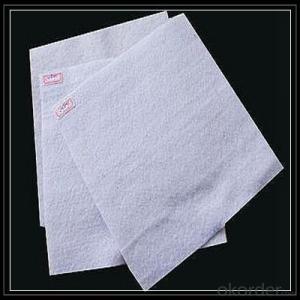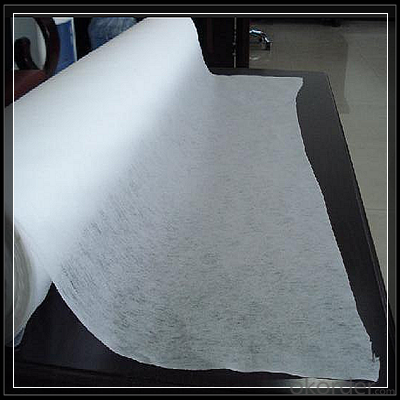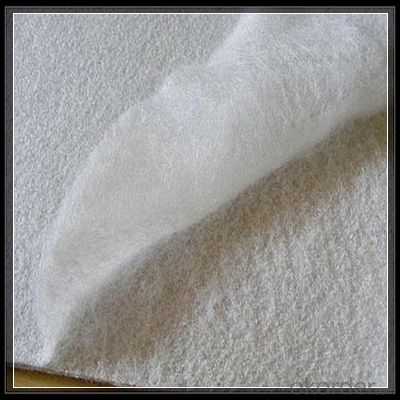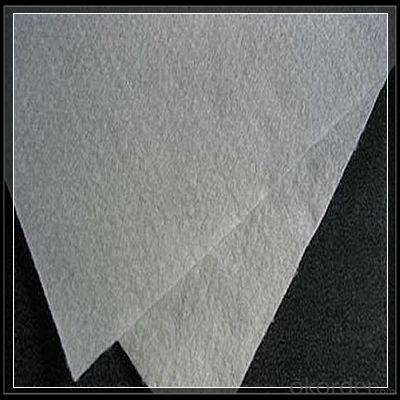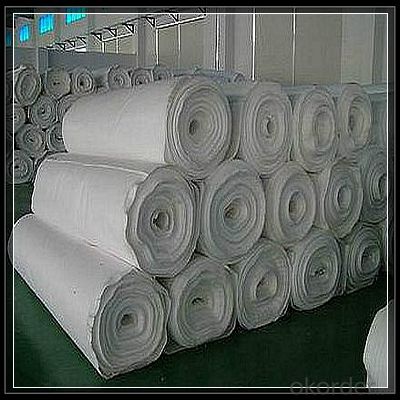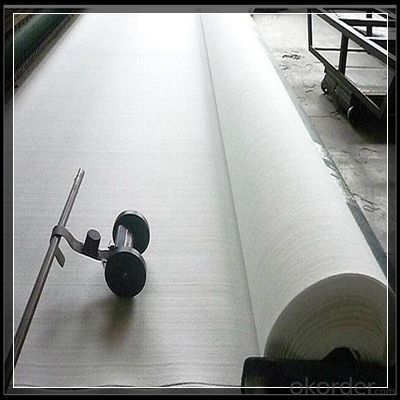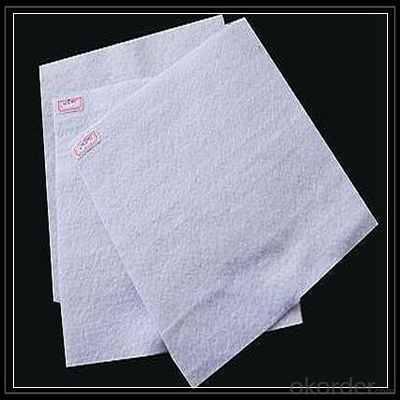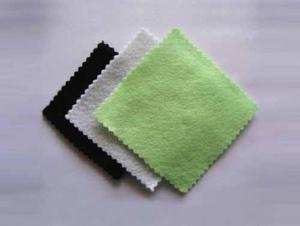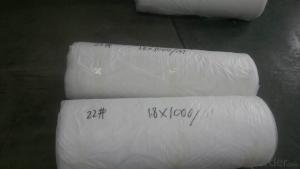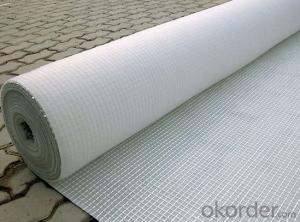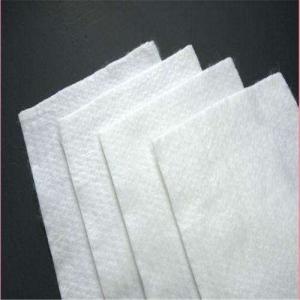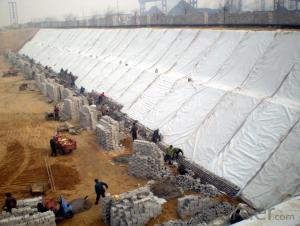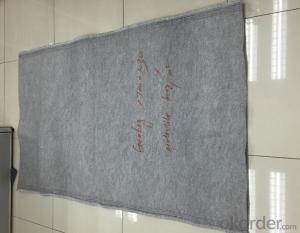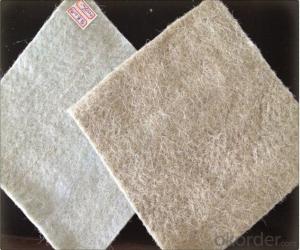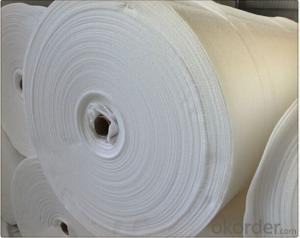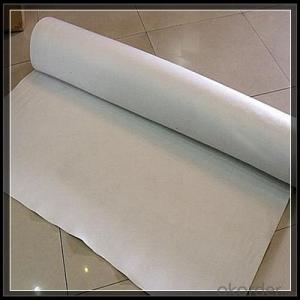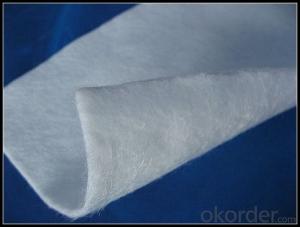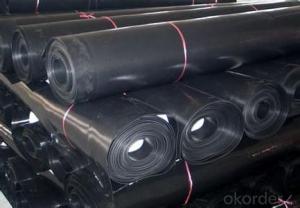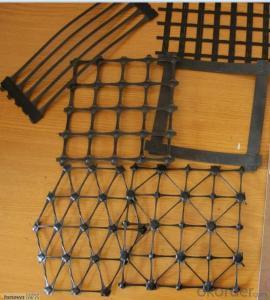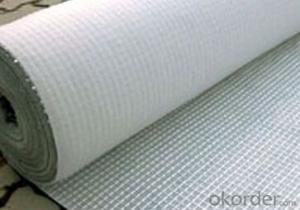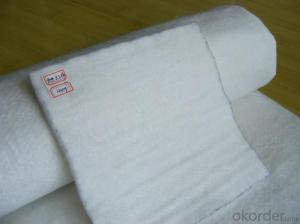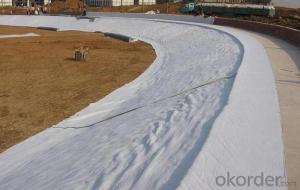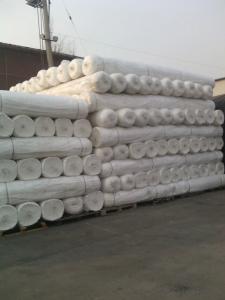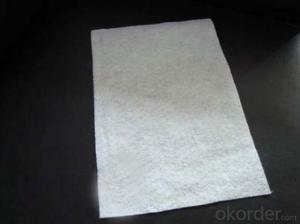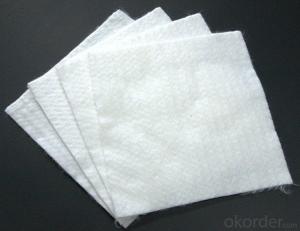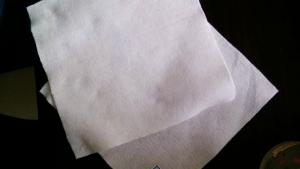Synthetic Geotextile - Warp Glass Composite Fiber with High Quality and Cheap Price
- Loading Port:
- China main port
- Payment Terms:
- TT OR LC
- Min Order Qty:
- 1000 m²
- Supply Capability:
- 1000000 m²/month
OKorder Service Pledge
OKorder Financial Service
You Might Also Like
Specification
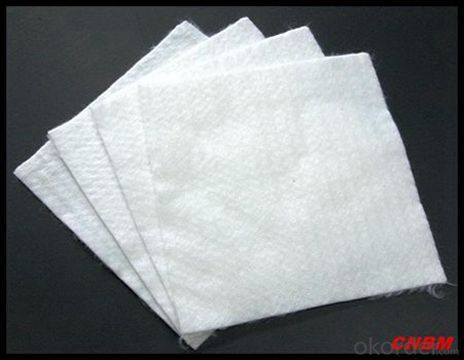
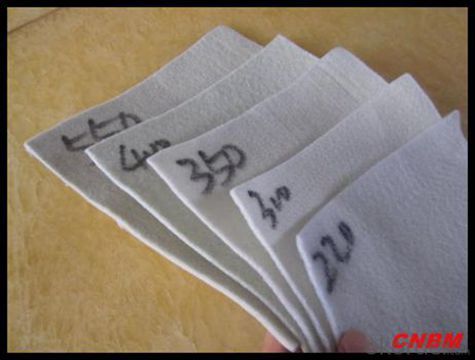
Introduction
Warp Glass Fiber Composite Geotextiles
Warp knitted compound, that is bound by line by the warp, weft and acupuncture staple fiber geotextile layer repeatedly walk through, so that became one of the three series. Thus both the warp composite geotextiles with high tensile strength, low elongation characteristics, and both the performance of acupuncture nonwovens. Therefore, Warp is a composite geotextile reinforcement can be used for enhanced isolation protection, and has a three-dimensional integral method to gather and have good water levels, different role of water. Showed a solid matrix and pores because of its continuous phase, a porous filter effect, is a versatile geotextile composites. It is today a high level of application of the international geotechnical composite substrate.
Packaging & Shipping
Packing: PLASTIC FILM INSIDE, AND WOVEN BAG OUTSIDE
Shipping: About 15 days after receipt the deposit
geotextile fabric
permeability,filtration,easy for construction
ISO and CE certificate
Good quality and competitive price
After-sales service
1.In order to provide customers with comprehensive technical support,we will provide technical and other related information upon request in a timely manner.
2.In required,we will appoint specialized technicians to the construction site to give technical trainings to construction people,and offer technical guidance throughout the whole construction process.
3.For damage due to shipment and delivery,after we receive the complaint,we will check the issure through provided pictures and videos.If our responsibility is confirmed,we wil offer free replacement.
4.When the construction is completed,as your request,our technical staff may participate in the final acceptance.
FAQ:
Q: What kind of payments does jenor support?
A: T/T, L/C, Cash are accepted.
Q: Do you charge for the samples?
A: Accordeing to our company policy, the samples are free, we only charge the freight fee. And we will return the freight fee during the next order.
Q: Can you produce according to customers' design?
A: Sure, we are professional manufacturer, OEM and ODM are both welcome.
Q: Do you have other products?
A: Yes, please check the pictures:
- Q: How do geotextiles contribute to sustainable construction practices?
- Geotextiles contribute to sustainable construction practices by providing a range of beneficial functions. They can stabilize soil, prevent soil erosion, and enhance drainage systems, which reduces the need for excessive excavation and reduces the amount of construction materials required. Geotextiles also promote environmental protection by filtering out pollutants and preventing their migration into surrounding areas. Additionally, they prolong the lifespan of infrastructure, reducing the need for frequent repairs and replacements, thereby minimizing the consumption of resources and energy. Overall, geotextiles play a vital role in sustainable construction practices by promoting efficiency, cost-effectiveness, and environmental conservation.
- Q: What are the key factors affecting the permeability of geotextiles?
- The key factors affecting the permeability of geotextiles include the fabric structure and composition, thickness, porosity, and pore size distribution. The type and arrangement of fibers or filaments, as well as the presence of any coatings or additives, can also impact permeability. Additionally, factors such as compaction, moisture content, and pressure can influence the ability of geotextiles to allow water or fluids to pass through.
- Q: How do geotextiles affect construction site safety?
- Geotextiles play a crucial role in enhancing construction site safety by providing various benefits. Firstly, they act as a protective layer, preventing soil erosion and stabilizing the ground, which reduces the risks of landslides and collapses. Secondly, geotextiles can improve drainage by allowing water to flow through while retaining soil particles, preventing water accumulation that can lead to structural instability. Additionally, they enhance soil filtration, reducing the likelihood of contamination and pollution. Overall, geotextiles contribute to a safer construction site environment by mitigating potential hazards and ensuring the stability and integrity of the project.
- Q: How do geotextiles help with filtration in geosynthetic clay liners?
- Geotextiles play a crucial role in enhancing filtration in geosynthetic clay liners (GCLs) by acting as a barrier that prevents fine particles from migrating into the clay layer. The geotextile acts as a filtration medium, allowing water to pass through while retaining the soil particles. This helps to maintain the integrity and effectiveness of the GCL by preventing clogging and maintaining the desired hydraulic conductivity.
- Q: How do geotextiles help with weed control in landscaping projects?
- Geotextiles help with weed control in landscaping projects by acting as a barrier that prevents weed growth. They are placed under the topsoil or mulch and effectively block the sunlight that weeds need to grow. Additionally, geotextiles provide a physical barrier that inhibits weed root penetration and spread. This reduces the need for chemical herbicides and minimizes the maintenance required to keep landscaping areas weed-free.
- Q: Are geotextiles commonly used in coastal erosion control?
- Yes, geotextiles are commonly used in coastal erosion control. They are frequently employed for various applications such as shoreline stabilization, beach nourishment, and protecting dunes. Geotextiles help to prevent soil erosion by providing filtration, drainage, and reinforcement, making them an effective solution in coastal areas prone to erosion.
- Q: What is the specific use of geotextile construction site? How much is it used?
- Hello, play the role of reinforcement, the use of the filter depends on the design requirements is calculated by square method Huazhi geotextile material manufacturers for you to answer
- Q: How do geotextiles help in reducing the settlement of structures on soft soils?
- Geotextiles help in reducing the settlement of structures on soft soils by providing reinforcement and stabilization. They are placed beneath the foundation of the structure to distribute the load and prevent the soil from excessive compression. The geotextiles act as a barrier, preventing the intermixing of soil particles and maintaining soil structure, which ultimately reduces settlement and improves the overall stability of the structure.
- Q: How do geotextiles enhance the performance of geocells?
- Geotextiles enhance the performance of geocells by acting as a separation and filtration layer between the soil or aggregate fill and the geocell walls. They prevent the migration of fine particles into the geocell structure, improving its overall stability and load-bearing capacity. Geotextiles also provide reinforcement and confinement to the infill material, minimizing lateral spreading and improving the geocell's structural integrity.
- Q: Can geotextiles be used in groundwater protection systems?
- Yes, geotextiles can be used in groundwater protection systems. Geotextiles are permeable fabrics that can help in filtration and separation of different soil layers. They can be used to prevent the migration of fine particles and contaminants, providing an additional layer of protection for groundwater sources.
Send your message to us
Synthetic Geotextile - Warp Glass Composite Fiber with High Quality and Cheap Price
- Loading Port:
- China main port
- Payment Terms:
- TT OR LC
- Min Order Qty:
- 1000 m²
- Supply Capability:
- 1000000 m²/month
OKorder Service Pledge
OKorder Financial Service
Similar products
Hot products
Hot Searches
Related keywords
